HCHR_The Islamic Republic of Iran has been among the primary victims of terrorism and a breeding ground for both domestic and foreign terrorist groups since the inception of the Islamic Revolution in 1979. Throughout this period, thousands of innocent individuals have been martyred or severely injured as a result. Terrorist organizations have aimed their attacks at all segments of society, indiscriminately affecting men, women, children, the elderly, and even scientists.
Most notably, the bulk of assassinations, constituting clear instances of crimes against humanity, have been perpetrated by a nefarious terrorist group known as the Monafeqeen Terrorist Organization, or the so-called People’s Mojahedin terrorist organization, within Iran. Since the outset of the Islamic Revolution, this terrorist group
initiated a retaliatory campaign by executing explosions in densely populated urban centers, assassinating governmental officials, launching armed assaults, employing firearms and knives against civilians, as well as engaging in kidnappings, torture, and acts of betrayal against the nation. These criminal and terrorist actions, including espionage in favor of Saddam’s Baath regime, tragically led to the martyrdom of nearly 17,000 individuals at the hands of this terrorist group’s agents.
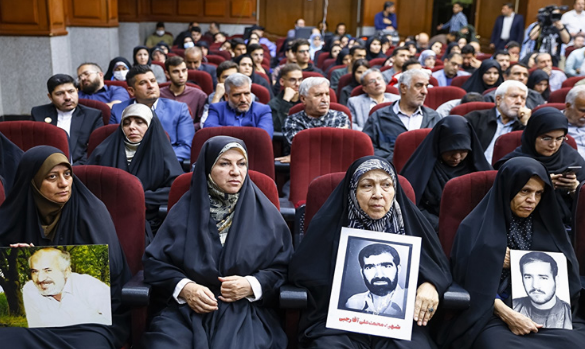
The primary objective and operational foundation of the Monafeqeen terrorist group are notably centered on assassinating and eliminating individuals who oppose or dissociate from their ideology. This intent is distinctly evident in their published documents and statements. However, the most egregious and blatant violation of human rights manifests in the ruthless killing of innocent civilians, primarily through bombing civilian gathering places. In 1981, agents affiliated with this terrorist group endeavored to assassinate numerous high-ranking officials in Iran, including the President, Prime Minister, Chief of the Judiciary, ministers, parliament members, clerics, and a multitude of Iranian citizens. Subsequent to targeting the nation’s leaders in 1981, the Monafeqeen terrorists shifted their focus to massacring innocent civilians. Between 1982 and 1988 alone, their criminal and terrorist actions resulted in the martyrdom of over 17,000 documented individuals. Among the manifold transgressions of this terrorist group are acts of treason and espionage, notably collaborating with adversarial governments. During the Baath regime’s invasion of Iran, this terrorist group actively transmitted various intelligence, including the locations of citizens’ gatherings, 4 facilitating the barrage of missile attacks being conducted against Iran.
Innocent civilians from neighboring nations, notably Iraq and Syria, have also borne witness to the atrocities committed by this terrorist group. Operating in conjunction with the Saddam regime after establishing a base in Iraq, those aligned with the Monafeqeen Terrorist Organization perpetrated extensive crimes against various ethnic terrorist groups within the country, notably targeting Shia and Kurdish populations. One harrowing instance, the Anfal campaign (Kurdish genocide) spanning from February to September 1988 across Kirkuk, Diyala, Nineveh, and Salahuddin provinces, resulted in the destruction of a significant number of villages. In collaboration with the Monafeqeen terrorists, more than 182,000 defenseless individuals fell victim to brutal executions, including being buried alive, beheadings, mass shootings, and burning. The Judiciary of Iraq has initiated legal proceedings against the Monafeqeen terrorists and has subsequently issued arrest warrants for 118 of its principal operatives. Subsequent to the inception of terrorist undertakings within Syria and Iraq from the year 2011 onwards, this particular terrorist group, in collaboration with other individuals identified as terrorists within Syria, has engaged in large-scale homicides targeting the Syrian people. Concurrently, while providing training for different terrorist cohorts, they have perpetrated widespread crimes within this geographical area.
The European Parliament’s resolution of July 13, 2023, titled “Recommendations to amend the European Parliament’s provisions on transparency, honesty, accountability, and the fight against corruption,” unveils the deceptive practices of this 7 Tribunal to Probe Accusations Faced by Monafeqeen Terrorist Organization terrorist group, particularly in exploiting political figures and misrepresenting affiliations. The resolution explicitly exposes the Monafeqeen terrorists as a terrorist organization accused of intimidation, torture, and murder of members within the Iranian diaspora. It delineates the terrorist group’s use of aggressive and deceitful methods to engage with European Parliament representatives, including concealing their true association. The resolution highlights manipulative tactics such as falsely attributing European Parliament members’ names to letters they did not endorse or as co-hosts of conferences they never supported. Additionally, the terrorist group employed 45 fabricated titles to mislead European Parliament members, actions explicitly detailed within the resolution.
Moreover, it remains pertinent to note that the Monafeqeen terrorists persist in maintaining their terrorist activities, as evidenced by recent arrests of certain members engaged in terrorist acts, thereby subjecting them to legal proceedings.
Commencement of Judicial Probe into Monafeqeen Terrorist Organization & Principal Active Members
On 9 July 2023, the Tehran Prosecutor’s Office, situated in the Iranian capital, forwarded a comprehensive 729-page indictment, comprising 6757 pages of written evidence alongside 1000 hours of audio and video documentation, to the Tehran Justice Department. This dossier was allocated to Criminal Court 1 of Tehran, where a panel of three judges, consisting of a presiding judge and two advisors, was assigned to preside over the case. Subsequently, the inaugural court session, conducted in adherence to legal protocols, convened publicly on 3 December 2023.
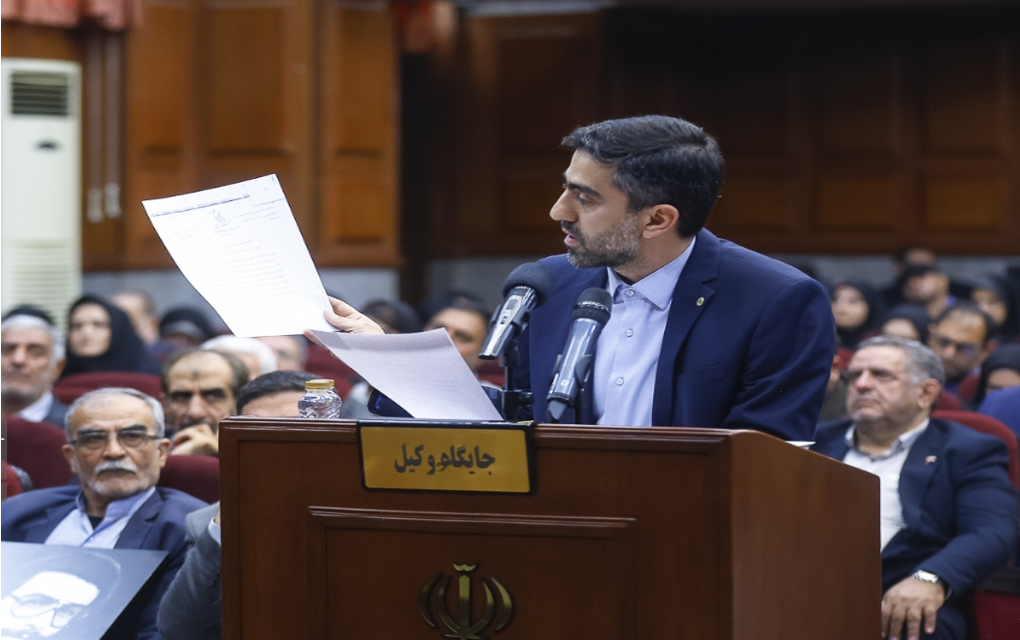
Eleventh Court Session to Probe into Monafeqeen Terrorist Organization & Active Members
The eleventh judicial session concerning the case of the Monafeqeen Terrorist Group and its principal members convened publicly on 23 April 2024. Present at this hearing were legal representatives, families of victims, investigating judges, and the prosecutor’s representative.
During the proceedings, Seyyed Meysam Hakimzadeh Hosseini, one of the attorneys representing the case, took the stand to present his statements and defenses. The key points he addressed are as follows:
“Today, the text of the prepared bill was submitted to the court. This court serves as an excellent opportunity for the media to highlight the crimes of the terrorist group known as the Hypocrites. The evidence presented clearly indicates that crimes have occurred, and it is impossible for anyone who hears these accounts to remain indifferent. It is the duty of the media, guided by public conscience, to report these cases. As we witness today, consciences have been awakened regarding the crimes in Gaza, and there is widespread condemnation. The atrocities committed over the past forty years in Iran by the terrorist criminals of the “People’s Mojahedin Organization” (the MKO) are comparable to those we see in Gaza today. We are dealing with individuals who have committed the highest levels of crime and treason against their country and national interests”.
After his colleagues in the MKO were executed before the Islamic Revolution, Masoud Rajavi received a pardon from Mohammd Reza Pahlavi (Shah=King), and began his cooperation with SAVAK. This is explicitly stated in a letter from General Nasiri. The unresolved question posed to the members of the Monafeqeen Terrorist Group is why, despite Masoud Rajavi’s death sentence and the execution of other members’ sentences, he was not only spared but also ascended to the leadership of the group. It later became evident that he provided information on other members, exposing them to the SAVAK. According to the letter from General Nasiri, Masoud Rajavi was one of the principal agents and leaders of the organization in 1970s, therefore, along with other leaders of this organization, he was definitely sentenced to death. According to the correspondence, Rajavi was an exception and was regarded as avaluable and favored asset by SAVAK. Despite his death sentence,Tribunal to Probe Accusations Faced by Monafeqeen Terrorist Organization he was granted amnesty and a commuted punishment. The fact that the MKO was a colleague of the SAVAK is not a simple matter.
SAVAK introduced Masoud Rajavi as its organizational colleague, during the time when the MKO was considered a major enemy group by the Pahlavi regime, with Rajavi as its leader. At a certain point, the Pahlavi regime concluded that instead of eliminating the MKO, it would be more advantageous to co-opt the organization, which had an ideological foundation and garnered the support of the youth. The regime saw this as a strategic opportunity to infiltrate and utilize the organization forits own purposes.”
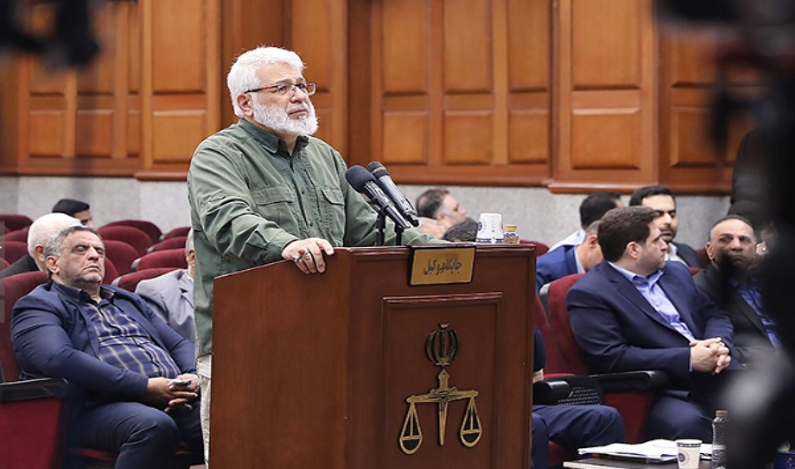
An Exposition on the Evolution of the Monafeqeen Terrorist Organization and their Crimes: Insights from the Historian and Author of the Book ‘Sleepwalkers’
In the continuation of the court session, historian and researcher Safa-ad-din Tabaraiyan was called to the stand as an informed individual introduced as the representative for some of the complainants. The key points presented by him are as follows:
“I am a graduate of Oriental Studies from Saint Joseph University of Beirut, the author of 35 books, and the recipient of the Best Book of the Year award. In my book Sleepwalkers, I discuss the issue of the MKO and the relationship between its leaders and the intelligence and military institutions of Iraq.
It appears that Islam was exploited by the MKO, given that 95% of the country’s population was Shia. In fact, there were traces of Marxism in the organization’s pamphlets and the thinking of its main staff. This group engaged in extreme acts of violence, such as dismembering a member’s body, burning it, and disposing of the remains, or cutting open another member’s stomach, pouring gasoline inside, and then burning the body. These acts mirror those of takfiri movements, where they kill their own members.
The record of their crimes is documented in the newspapers of that period. The leaders of this group redefined the boundaries of insolence. Massoud Rajavi’s multiple marriages included his marriage to Mehdi Abrishamchi’s wife, Maryam Qajar Azdanlou (also known as Maryam Rajavi). He also had a politically-charged marriage with Firouzeh Bani Sadr for two years. He developed feelings for Firouzeh in Paris. In the 1980s, the organization experienced a wave of ideological divorces. Additionally, this organization was engaged in espionage for Saddam Hussein.”

Saddam’s Assertion: “My Government’s Survival is Indebted to the Youth of the MKO”
Serving as an informant and a former member of the group, Ali Ekrami was placed on the stand during the court session by the
order of the court judge. The key points presented by him are as follows:
“In 1979, I was influenced by the organization’s compelling slogans and, while a petroleum student, became a member. After the victory of the Islamic Revolution, I was an idealistic youth from a poor and weak family, so I used to study and work at the docks in [the city of] Bandar-e Emam Khomeyni. The organization’s deceptive slogans led me to believe they were the key to the happiness of the Iranian nation. In 1981, after the group announced its armed struggle, I, being devoted to Imam [Khomeini], did not accompany the group and led an everyday life in hiding. However, in 1986, I was recruited again, traveled to Iraq via Pakistan, and became a member of the Central Council, specifically Row 56 of the central members.
I became a member of the Central Council of Foreign Policy and Relations with Iraq in 1987. The headquarters office was located in Baghdad, where I was a member of the coordination of communication with Iraq and part of Iraqi intelligence. I was one of the coordinators for meetings between Haboush (head of the intelligence organization of the Iraqi Army) and Masoud Rajavi.
The intelligence extracted from inside Iran and received by Iraqi intelligence and the Baath regime, was gathered through wiretapping and telephone surveillance. Additionally, 400 military advisors were trained at Ashraf Barracks. In all operations, including Operation Chelcheragh (also known as Operation Forty Lights), ammunition and other supplies were provided by the Baath regime. People still remember the bombings of Iraq during the imposed war on Iranian cities. The MKO asked its members living in these cities to call their families and inquire about the level of destruction and fear among the people. This was despite the fact that member contact with their families was generally prohibited. The organization wanted its members to deceive their families and extract information under the guise of expressing concern.
After the Shabaniya Intifada in the Iraqi city of Baquba, Saddam Hussein stated: “My Government’s Survival is Indebted to the Youth of the MKO, who drew their swords in time!”
Twelfth Court Session for the Judicial Proceedings of the Case of Monafeqeen Terrorist Group & Its Principal Active Members
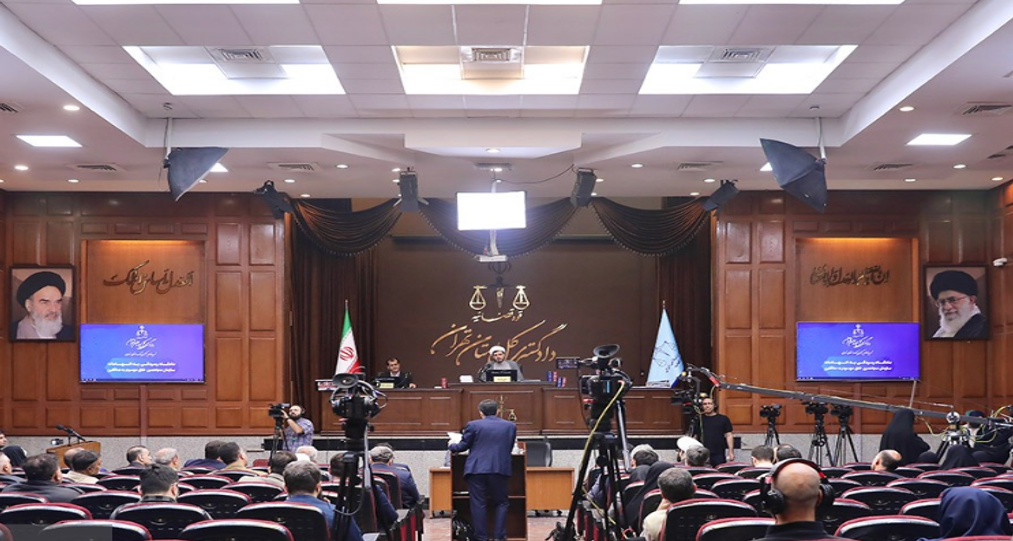
The twelfth session of the court was held publicly on 7 May 2024, with the presence of attorneys, a group of victims’ families, judges of the investigating branch, the prosecutor’s representative. After detailing the investigation into the crimes committed by the Monafeqeen Terrorist Group, the head of the court issued a warning to the countries hosting the defendants in this case. He emphasized that hosting these defendants constitutes a violation of international conventions against terrorism. He urged countries such as France to reconsider their decision to host individuals accused of terrorist acts and crimes against humanity and to cooperate with international organizations regarding their extradition in accordance with the issued Red Notice. Additionally, he called upon the people of Albania, as their country is hosting the defendants, to demand that their government extradite these individuals to Iran.
In the continuation of the court session, Mr. Hakimzadeh, the attorney representing the complainants, took the stand. His main points are as follows:
“During the period from 1965 to 1971, which marks the recruitment phase of the MKO, young people with Islamic ideologies were recruited. The membership of this organization consisted of young individuals with Islamic beliefs, and it was considered among the Islamist groups dedicated to combating the tyranny, oppression, and corruption of the Pahlavi regime.
From 1971 onwards, SAVAK began scrutinizing the MKO, leading to the execution of its principal founders and paving the way for Masoud Rajavi and Taghi Shahram to lead the central core of the organization. Initially, under the influence of Taghi Shahram, the organization adopted Marxism as its ideological framework. This ideological
shift was driven by Taghi Shahram. In the subsequent phase, SAVAK employed another strategy by positioning Masoud Rajavi as a counterforce to the organization’s Marxist tendencies, portraying him as the savior of the struggle against Marxist positions. Despite this, the organization’s movements remained aligned with Marxism. The question arises: Did both Masoud Rajavi and Taghi Shahram steer the organization towards Marxism? Many experts believe there was no true ideological shift within the organization; rather, Taghi Shahram merely removed the mask of Islamism from the MKO. Were there any members who opposed the removal of the Islamic mask from the MKO? Yes, there were.
One such member was Ahmad Ahmad, who, along with his wife, joined the MKO with the initial aim of fighting the Shah regime, motivated by the organization’s religious foundations. Ahmad Ahmad and his wife both had religious beliefs and, at one point, protested against the organization’s decision to shortening and eventually removal of the Quranic verse from the logo of the organization.”
The Organization’s Transgression: 900 Children Separated from Their Families & Sent to Europe in Ameriya Tragedy
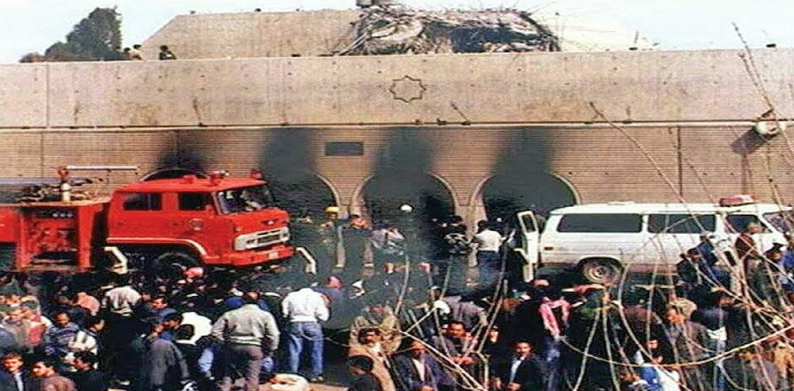
During the trial, Tabaraiyan, a history researcher, stated: “The organization had two members named Torab Haghshenas and Hossein Ahmadi Rouhani. Torab, a lawyer with a master’s degree in law, was the most well-known educated person in the organization. The organization communicated with the Baath party through these individuals. At the end of 1979, several individuals were expelled from the organization. During the victory of the Islamic Revolution, the imprisoned members of the organization who had been arrested by SAVAK were released.
Unfortunately, these members betrayed the trust placed in them and martyred thousands of people. The organization has carried out three significant operations.
One of these operations was Operation Aftab in the Fakkeh region, which took place on 28 March 1988. Approximately 20 days later, we witnessed the American attack on two Iranian oil platforms. The second operation, named Chelcheragh, was carried out in Mehran. On 1 March 1991, an area in Iraq called Ameriya was bombed. Following this incident, the organization forcibly separated 900 children from their families and sent them to Europe. These crimes are indefensible. The MKO
forcibly separated family members. During this period, the MKO had established ten prisons in Iraq for its members. We are dealing with individuals who have even killed their own group members. We hope that the Iraqi government will deal with the organization’s crimes against the people of Iraq.”
Maryam and Masoud Rajavi’s Plea to the U.S. for Survival
Then, Hakimzadeh, the complainants’ lawyer, stated: “The organization’s crimes were not limited to the people of Iran. The adoption of an armed approach by the MKO vis-a-vis the Iranian populace was evident immediately after the victory of the Islamic Republic. Following the Revolution’s triumph, the organization began modernizing its structure. One of the primary components in the organization’s new framework was an armed underground network, later known as the Headquarters of the People’s Mojahedin. This network, established to safeguard the organization, set up bases in various cities. This headquarters endeavored to steal weapons from military barracks and police stations and provided military training to its members. Masoud Rajavi openly aligned with the West for his survival.
After conducting numerous terrorist operations against the people of Iran, Rajavi fled to France and subsequently to Iraq. In reality, the MKO became a manifest tool at the disposal of the enemies of the Iranian people during this period. The MKO relocated to Albania with the support of the U.S. government, and Maryam and Masoud Rajavi moved to the United States to ensure their existence.”
States’ Obligation to Curtail Individuals Accused of Terrorist Crimes
Further, the judge and president of the court stated: “According to Security Council Resolution 1373, approved in 2001, which encompasses a set of binding obligations for States, states are obliged to prevent the acts of those accused of crimes that constitute examples of terrorism. One of the significant issues before this court is the matter of deviation and infiltration. Infiltration has long been a tactic employed by the enemies of the Revolution in their efforts to undermine the system and the Islamic Republic. In addressing the accusations against the defendants in this case, this court will thoroughly and expertly examine the issue of infiltration.”
To read the detailed report click here